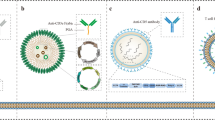Abstract
Currently, mammalian cell technology has become the focus of biopharmaceutical production, with strict regulatory scrutiny of the techniques employed. Major concerns about the presence of animal-derived components in the culture media led to the development of serum-free (SF) culture processes. However, cell adaptation to SF conditions is still a major challenge and limiting step of process development. Thus, this study aims to assess the impact of SF adaptation on monoclonal antibody (mAb) production, identify the most critical steps of cell adaptation to the SF EX-CELL medium, and create basic process guidelines. The success of SF adaptation was dependent on critical steps that included accentuated cell sensitivity to common culture procedures (centrifugation, trypsinization), initial cell concentration, time given at each step of serum reduction, and, most importantly, medium supplements used to support adaptation. Indeed, only one of the five supplement combinations assessed (rhinsulin, ammonium metavanadate, nickel chloride, and stannous chloride) succeeded for the Chinese hamster ovary-K1 cell line used. This work also revealed that the chemically defined EX-CELL medium benefits mAb production in comparison with the general purpose Dulbecco’s Modified Eagle’s Medium, but the complete removal of serum attenuates these positive effects.




Similar content being viewed by others
References
Bollati-Fogolín, M., Forno, G., Nimtz, M., Conradt, H. S., Etcheverrigaray, M., & Kratje, R. (2005). Biotechnology Progress, 21, 17–21.
Brunner, D., Frank, J., Appl, H., Schöffl, H., Pfaller, W., & Gstraunthaler, G. (2010). ALTEX, 27, 53–62.
Chen, Z., Iding, K., Lütkemeyer, D., & Lehmann, J. (2000). Biotechnology Letters, 22, 837–841.
Conrad, M., Umbreit, J., & Moore, E. (1999). The American Journal of the Medical Sciences, 318, 213–229.
Doyle, A., & Griffiths, J. B. (1998). Cell and tissue culture: laboratory procedures in biotechnology. Chichester, England: John Wiley & Sons.
Elliott, R. L., Elliott, M. C., Wang, F. E. N., & Head, J. F. (1993). Annals of the New York Academy of Sciences, 698, 159–166.
Eto, N., Yamada, K., Shito, T., Shirahata, S., & Murakami, H. (1991). Agricultural and Biological Chemistry, 55, 863–865.
Freshney, R. I. (2005). Culture of animal cells: a manual of basic technique (5th ed.). NJ: John Wiley & Sons.
García-Alfonso, C., López-Barea, J., Sanz, P., Repetto, G., & Repetto, M. (1996). Archives of Environmental Contamination and Toxicology, 30, 431–436.
Griffiths, J. B. (1987). Developments in Biological Standardization, 66, 155–160.
Ho, E., & Ames, B. N. (2002). Proc Nat Acad Sci, 99, 16770–16775.
Hutchings, S. E., & Sato, G. H. (1978). Proc Nat Acad Sci, 75, 901–904.
Jacobia, S., Kenerson, R., Tescione, L., Gruber, D., Jayme, D., Munroe, D., & Gorfien, S. (2006). Animal cell technology: basic & applied aspects. Netherlands: Springer.
Jardon, M., & Garnier, A. (2003). Biotechnology Progress, 19, 202–208.
Kenerson, R. W. (2005) United States Patent Application Publication, Invitrogen Corporation, US, WO/2006/004728.
Kovář, J., & Franěk, F. (1989). Experimental Cell Research, 182, 358–369.
Lee, J., Tscheliessnig, A., Chen, A., Lee, Y. Y., Adduci, G., Choo, A., & Jungbauer, A. (2009). Journal of Chromatography. A, 1216, 2683–2688.
LeFloch, F., Tessier, B., Chenuet, S., Guillaume, J.-M., Cans, P., Goergen, J.-L., & Marc, A. (2006). Cytotechnology, 52, 39–53.
Liu, C.-H., & Chang, T.-Y. (2006). Proc Biochem, 41, 2314–2319.
Min Lee, G., Koo, J. and Flickinger, M. C. (2009), in Encyclopedia of Industrial Biotechnology, John Wiley & Sons.
Ozturk, S., Kasebo, G., Mahaworasilpa, T., & Coster, H. G. (2003). Hybridoma and Hybridomics, 22, 267–272.
Ozturk, S. S., & Hu, W.-S. (2006). Cell culture technology for pharmaceutical and cell-based therapies. NY: CRC Press.
Ozturk, S. S., & Palsson, B. O. (1991). Biotechnology and Bioengineering, 37, 35–46.
Rodrigues, M. E., Costa, A. R., Henriques, M., Azeredo, J., & Oliveira, R. (2009). Biotechnology Progress, 26, 332–351.
Schröder, M., Matischak, K., & Friedl, P. (2004). Journal of Biotechnology, 108, 279–292.
Sinacore, M., Drapeau, D., & Adamson, S. (2000). Molecular Biotechnology, 15, 249–257.
Sung, Y. H., Lim, S. W., Chung, J. Y., & Lee, G. M. (2004). Applied Microbiology and Biotechnology, 63, 527–536.
Trummer, E., Fauland, K., Seidinger, S., Schriebl, K., Lattenmayer, C., Kunert, R., Vorauer-Uhl, K., Weik, R., Borth, N., Katinger, H., & Müller, D. (2006). Biotechnology and Bioengineering, 94, 1033–1044.
Tsao, Y.-S., Condon, R., Schaefer, E., Lio, P., & Liu, Z. (2001). Cytotechnology, 37, 189–198.
Werner, R. G., Noe, W., Kopp, K., & Schlüter, M. (1998). Arzneimittel Forschung, 48, 870–880.
Wong, V., Wong, N., Tan, H.-K., Wang, D. and Yap, M. (2003) Mol. Eng. Biol. Chem. Sys. (MEBCS).
Wurm, F. M. (2004). Nat Biotech, 22, 1393–1398.
Zhang, J., & Robinson, D. (2005). Cytotechnology, 48, 59–74.
Acknowledgments
The authors acknowledge funding and support from the Portuguese Foundation for Science and Technology (FCT), namely grant ref SFRH/BD/46661/2008 for Maria Elisa Rodrigues and SFRH/BD/46660/2008 for Ana Rita Costa.
Author information
Authors and Affiliations
Corresponding author
Rights and permissions
About this article
Cite this article
Rodrigues, M.E., Costa, A.R., Henriques, M. et al. Advances and Drawbacks of the Adaptation to Serum-Free Culture of CHO-K1 Cells for Monoclonal Antibody Production. Appl Biochem Biotechnol 169, 1279–1291 (2013). https://doi.org/10.1007/s12010-012-0068-z
Received:
Accepted:
Published:
Issue Date:
DOI: https://doi.org/10.1007/s12010-012-0068-z




